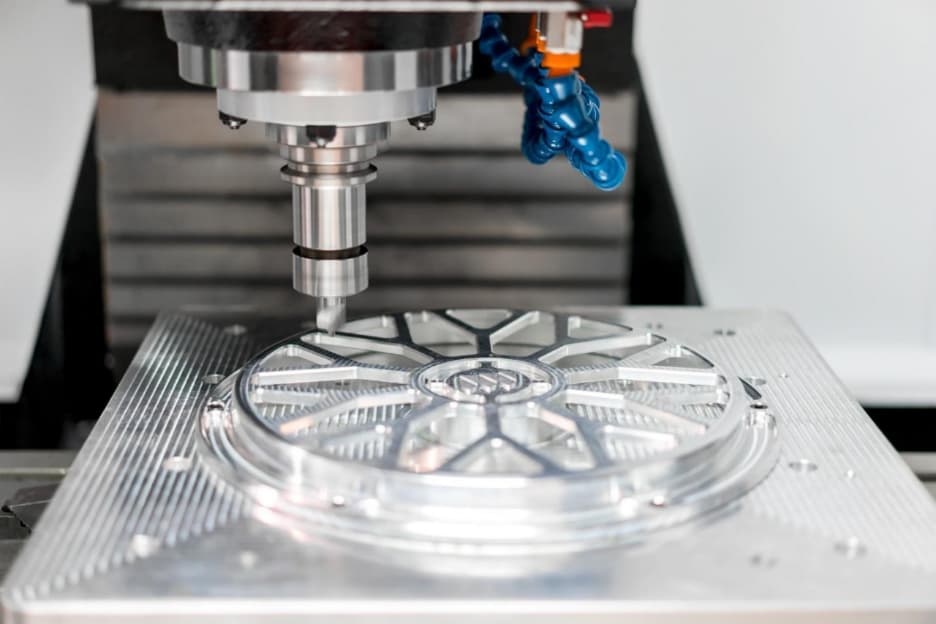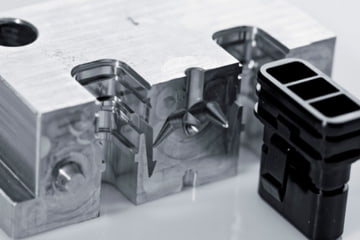The prototype aims to see exactly how your product appears and acts in a real-world scenario. There are different prototyping processes in the manufacturing industry, ranging from CNC machining to 3D printing. The beauty of these processes is their speed and cost-friendliness, as most of them enable you to produce prototypes cheaply. Rapid tooling is another process used for producing prototypes.
Unlike the other prototyping processes, this process applied in low volume injection molding helps manufacturers produce tools and project parts cheaply and fast. Prototyping using this approach can help show how different parts of your product would work.
Keep reading as we provide great insight into rapid tooling, what it is, the processes involved, how to make rapid tools, and its benefits and limitations.
Overview of Rapid Tooling
Also known as bridge tooling or prototype tooling, this is one of the steps in product development. It involves hand-load inserts, stocked mold base, and mold material. The mold material could be either aluminum or soft steel.
It is a rapid tool that enables you to get project parts cheaply and fast. The result is the production of parts through low-volume injection molding that functions as tools. Manufacturers subscribe to rapid tools because they enable manufacturers to notice and correct flaws in the current design to prevent issues in the final parts before a full-scale investment in production tooling.
Moreover, it allows you to use the same materials for actual production. In order words, they enable you to decide if you have made the right material choices, as you get a clearer picture of your prototype, including how its different parts would function in a real-world scenario. Therefore, using rapid tooling is a good way to develop small-batch orders in process design, marketing, and product evaluation.
How Does Rapid Tooling Work?

With the rise in demand for cheap tooling solutions, there is also a rise in the number of methods used for making rapid prototype tooling. Generally, there are two main methods of making rapid molds. These include:
- Direct Approach
- Indirect Approach
Direct Approach
The direct approach to rapid tooling produces the cavity mold inserts and actual core. One of the major strengths of this approach is its ability to produce tools with geometries that might be unattainable without them. For instance, in the conformal cooling technique, heat removal from the mold is uniform, reducing cooling times by about 66%. This occurs because the internal cooling channels follow the contour present in the mold cavities.
Merits of Making Rapid Tools With Direct Method
- Fast Production: With this approach, you can design and develop tools or molds in a few days or weeks as in this case.
- Not complex: The steps involved in this method are easy. They are also few as compared to the indirect method.
- Does not consume resources: Prototyping or producing using this method requires few resources. For instance, you can make several prototypes from one tool or mold.
- Flexible Approach: This approach is very flexible, allowing you to change designs as quickly as possible. In other words, if you have a design idea and want to test if it would work or not, this is the best approach for you. In addition, if your product does not require high-level detail, you should stick to the direct approach
Demerits Of Rapid Tools Made With Direct Method
- Not durable or robust: Prototypes made using this method are not often durable. That is to say, molds made using this process could break easily since the material used is usually not of high quality. This would subsequently lead to a higher production cost if you repeatedly have to replace the mold. Another avenue that could increase product cost is if you keep changing designs. Hence, a change of design would mean a change in the mold. Also, if detail is an important quality for your product or prototype, then this method is not for you.
- Error Prone: Creating multiple molds using this method often results in errors. This error is often due to differences in mold dimensions. This is especially true if you use different materials.
Indirect Approach
The indirect approach uses master patterns produced through additive manufacturing to make die or mold. While many methods are available for achieving this, soft tooling techniques are commonly used.
Soft tooling involves making use of silicone molds for plastic parts. Furthermore, these silicone molds also serve as sacrificial models when you want to cast metal parts.
Merits of Making Rapid Tools With Indirect Method
- Durable: The master pattern made from durable material lasts for a very long time. It is difficult to damage it during the prototyping process. This means that for the duration of your production, you may likely not change a master pattern unless there is a change in design.
- Versatile: Depending on the requirement, manufacturers can create soft and hard tools faster with this method.
- Ideal for experimentation and testing: This method gives you the leverage to experiment with different materials.
Demerits of Making Rapid Tools With Indirect Method
- Time-consuming: It takes longer to produce a master tool than it takes to produce a mold in the direct method. Furthermore, there are many steps involved in the process, which could increase the cost of production. Also, if there is a likelihood that your design will change during the prototyping stage, then you should avoid this method.
- Not for simple designs: This method works best with complex designs that require a lot of detail. In other words, if your design is simple, then this method is most likely not for you.
Having examined both methods, their merits, and their demerits, how do you choose the ideal one when you want to make a rapid mold? Below are some guidelines you should consider before making your decision.
- Budget: This entails how much funds you plan to use for prototyping and production.
- Timeline: How soon do you need the prototype or product
- Design complexity: Does your design require details? Is it complex or simple?
- Materials: What material do you have in mind for developing your prototype or product
Considerations to Make Prototyping Molds

When making prototyping molds, below are some factors you must consider.
- Mold strength: Mold should be strong and durable to withstand the injection molding process. It is also important to note that molding machines force heated materials into the mold at pounds per inch. If the mold is not strong enough, it might fall apart.
- Mold Smoothness: To inject and eject the plastic cleanly into and from the mold, it has to be smooth. However, some processes require adding materials in layers, so their products are not usually smooth. In situations like this, surface finishing is required in plastic parts.
Advantages Of Rapid Tooling In Manufacturing
Rapid tooling now has a wide rate of adoption among manufacturers because of the benefits it affords them. Still undecided on whether to use it for your prototyping needs? Here are some benefits rapid production tooling affords you.
Reduced Product Development Costs
Materials used in making a rapid mold are often cheaper and more flexible than those required for making a conventional mold. These materials range from different types of aluminum to steel.
Besides, 3D printed tooling being cost-effective helps you save money spent on production because the faster the process, the less you spend.
Fast Time to Market
It results in faster production of both prototypes and products. Besides, this speed reduces the time spent in the prototyping stage of production, hastening the time to market.
Mold Customization
With this prototype tooling, you can create your custom mold with any dimension. You can also run different materials through the mold and perform quality control tests on them. This comes in handy when you are unsure of the ideal material for your product.
Test Design and Functionality Thoroughly
This prototyping method gives you the leverage to make several prototypes or molds in a short time, sometimes in hours. It also gives you the freedom to test out new ideas and adjust old ones. This, in turn, helps improve design functionality and market value.
Increased ROI
Another advantage is that it hastens product development time, which in turn ensures you start recouping your investments in a short time. Also, lower production and prototyping costs reduce the time spent getting your ROI because you incur fewer expenses.
Limitations of Rapid Tooling In Injection Molding
It’s possible to produce rapid molds or tools in the shortest time, which accelerates the production of plastic parts. However, there are still limitations to rapid tooling. Below are a few of them.
Higher Injection costs, Labor costs
Prototyping with rapid tooling is a repetitive process, and this means spending more on injections, especially if you are looking to perfect a design. Higher injection costs translate to higher labor costs, which could increase your cost of production.
Shorter Mold Life Cycles
Rapid molds do not last long. This is due to the stress placed on them by the injection process. Besides, the materials used in producing the molds like aluminum and steel, are not of high quality. Hence, you would end up creating a new mold from time to time, as the previous ones wear out.
Rapid Tooling Vs Rapid Prototyping
Some people feel rapid tooling and rapid prototyping are the same, which is not true. There are differences, and we will discuss them here.
Rapid tooling involves the production of a tool or mold that enables manufacturers to rapidly-produce parts of a product that would function as a tool. Furthermore, there are two approaches to prototyping here; direct method and indirect method. But the common technique used is injection molding.
On the other hand, rapid prototyping is a technology or method that aids the rapid production of a physical part for end-use or use as a prototype. In addition, the common technologies involved in rapid prototyping are additive manufacturing (3D printing) and subtractive manufacturing (CNC machining).
Choosing Your Rapid Tooling Services
Want to realize your plastic products from a design in the shortest possible time? That is exactly what rapid tooling does for you.
Thankfully, RapidDirect remains the go-to company for your rapid tooling needs. Our top-quality injection molding service includes rapid tooling services. We tailor our services to meet clients’ demands, ensuring the production of quality prototypes. Furthermore, you do not have to break your bank to get a prototype of your design, as we offer one of the best prices in the industry.
Not sure what producing your design would cost? RapidDirect offers you an online quotation platform. All you need to do to access the quotation is upload a design file.
Conclusion
There are many benefits rapid tooling provides manufacturers, from saving time to reducing costs. We believe with the above information, you have gotten great insight into the different methods involved in this process and what differentiates it from rapid prototyping.
Irrespective of the type of product you want to develop, you must hire a reputable prototype manufacturer. With several manufacturers in the market, RapidDirect is the recommended manufacturer for all your prototyping needs.


